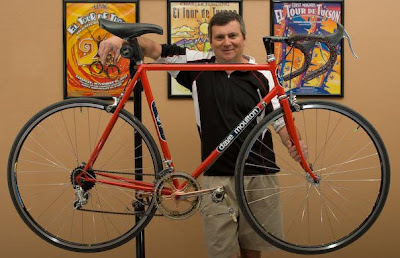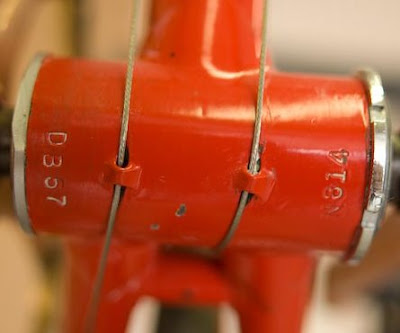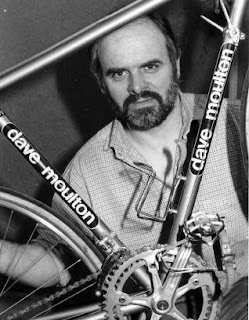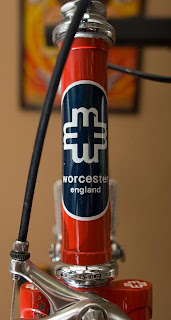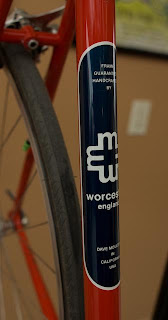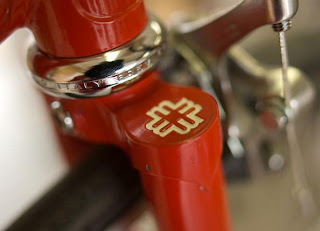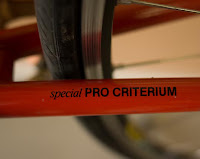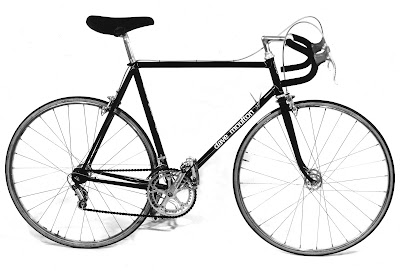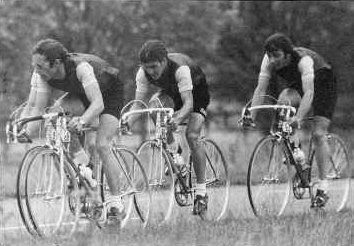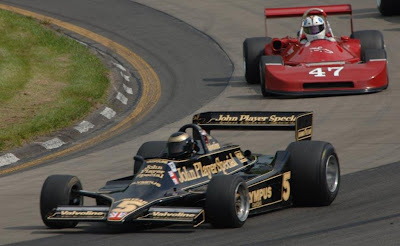A restored 1977 English built frame
 Fri, July 18, 2008
Fri, July 18, 2008 
I recently received a email with pictures from Rod Taylor, who lives in England. Rod is the original owner of a frame I built for him in 1977. In his message he wrote:
“Out of all my bikes, road, track, audax, touring, roadster, cyclo-cross, hybrid, mountain, my 1960 Dave Davey and 1977 Dave Moulton stand out as my favorites.
Last year I gave the frames to Dave Yates for renovation, the Dave Davey as a track bike was simpler to restore, but I took the decision to equip the Dave Moulton with the newer Campag gear.
The rear ends were increased to 130mm and new gear brazings fitted. Although I was using the latest components to rebuild it, I didn't choose carbon parts as I believed Campagnolo Mirage alloy would be more in keeping.
The finishing touches were added by employing a company in Cambridge to copy the transfers / decals, and the original orange Unica saddle has been retained. I am extremely pleased with the results of both machines, I love steel frames”
Thirty-one years old, in dog years that would be 217. I’m not sure what the ratio is for old bicycle frames. Maybe 2-1, sixty-two would be a reasonable guess.
 I whole-heartedly approve of Rod’s decision to build this bike up with modern equipment and keep riding it. Rather than keep it as a museum piece.
I whole-heartedly approve of Rod’s decision to build this bike up with modern equipment and keep riding it. Rather than keep it as a museum piece. The interesting thing I notice is that the bike does not look odd, with the old frame and modern components. I have seen several Fuso bikes re-built this way.
I think the reason is, by the mid 1970s I had established my own frame design, which at the time was out of sync with what other builders were doing.
However, I stuck with what I believed in, and this would become the standard design I would use on my American built frames of the 1980s. (John Howard, Fuso, and Recherché.)

An interesting footnote. Rod still has the original brochure from 1977 when he ordered the frame, he sent me a photocopy.
Click on the picture to view a larger image. Look at item 2: Shot-in seatstays. This is what is referred to in the US as “Fast Back” seatstays. Of course, they are no faster; it is just another way to attach seatstays.
The Dave Davy track frame (Mentioned above.) that Rod had restored along with the ‘dave moulton,’ can be viewed here. Scroll down the page to see pictures of this frame in white, along with photos of Rod Taylor riding the same bike in 1966 time-trials.
This is on the Classic Lightweights UK site; an interesting source for pictures and info on vintage British lightweights.
 Dave Moulton | Comments Off |
Dave Moulton | Comments Off | 
























